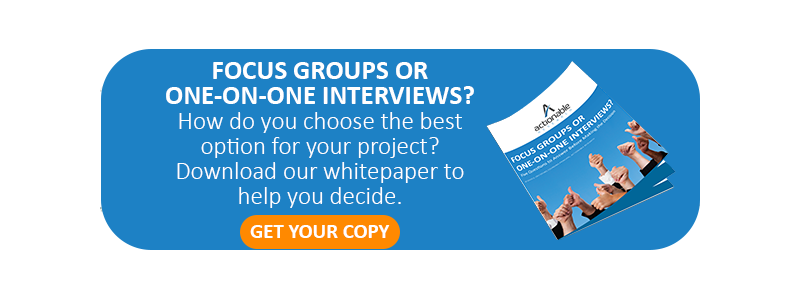
Aug 10, 2016 10:00:00 AM
Personas can be incredibly beneficial for companies when developed and utilized effectively. They can help guide both the sales process and marketing plans. We’ve talked about what a persona is in a general sense, but let’s dive deeper into the components of personas.
One of the biggest goals in persona development is to create as few personas as necessary while having ample differentiation between them to satisfy your marketing needs. Because personas represent such a wide selection of your customer, you want to keep them both specific enough to be useful, but also general enough to fit the vast array of prospects your team will come across. At the very least, you want to cover the basics:
Persona Names – A Refection of Their Attributes
Give your persona a name that represents their role or identity, as is functional for your efforts. These names will act as a quick reminder to the employees at your company who use and come in contact with your personas, enabling them to remember specific components of that persona at a glance.
For a B2B business, an example would be Marketing Mark. From this name, an employee would be able to gather that this particular persona works in the marketing department and hence implies information about his priorities.
Persona names may also focus on their habits or behavior as well. A B2C company may choose the name Sally Shop-Saver. This title would identify Sally as the primary shopper in her family, and also speak to her priorities while shopping.
Demographics and Psychographics – To Enable Stronger Messaging
Demographics may include age, gender, location, the size of a population or company, and more. Including demographics in your personas allows you to market more effectively by sending content and related messages which are customized for their intended audience. If one of your personas is comprised of couples aged 50-55, for example, your materials could address pop culture references such as movies or experiences from the 80s, which are appropriate for this age group.
In the B2B world, age and size of company can help your employees determine the most efficient product for that individual, as well as starting points for customer knowledge. For instance, if one of your personas is addressed toward gentlemen nearing retirement at large companies, a sales person selling technology may know to begin with the product benefits and proceed cautiously with respect to technology experience, as that individual is less likely statistically to be excited about the technology than the benefits. In addition, your marketing team may use this information to choose a medium of communication that differs from others, one best suited for that persona.
Demographics can also enable connection to a generational group as well. A recent Verizon commissioned research study showed that Millennials drop their smartphones 4 times a week, which is twice as frequently as Baby Boomers or Gen Xers. This knowledge enables a smartphone manufacturer to tailor specific messages regarding a phone’s durability to this generational audience.
The Buyer’s Journey – To Choose Optimal Media
Differences between buyers’ journeys influence the communication from marketing and the interactions of the sales team. For example, if a customer’s awareness stage isn’t dependent on their being online, you may choose to focus on other personas for this particular stage. If you send a customer the wrong offer, or are pushy throughout the awareness stage, it could take your company out of the running; however, a well-timed offer, Instagram post, or email could peak their interest.
This component is vital in the creation of any persona. Because it is viewed as limiting to a large group, some may choose not to include it. I would, still, encourage you to consider include differences between buyers’ journeys in your personas whenever possible. Remember though, while personas are an excellent general representation, every individual situation will vary slightly. This, of course, is where killer sales instinct really comes in handy.
When the buyer’s journey is included in a persona, your employees have a better chance at reaching out to their customers and closing that sale.
Additional Components – For Well-Rounded Representations
Ideally, personas should tell the stories of the most fundamental yet different groups of your customers, based on their marketing requirements. When glancing at your company’s persona one-sheet, you and others who use it should feel prepared to sell and market to that audience. If you find yourself with questions and curiosities that remain, consider adding additional components to your persona or adding personas.
It's important to include additional components for the development of well-rounded personas, but always remember keeping a balance of data can help keep personas as simple as possible.
Looking for More?
Stay tuned for our upcoming Ebook, “Persona Development – Backed by Science,” and subscribe to our blog to receive the rest of our series.

